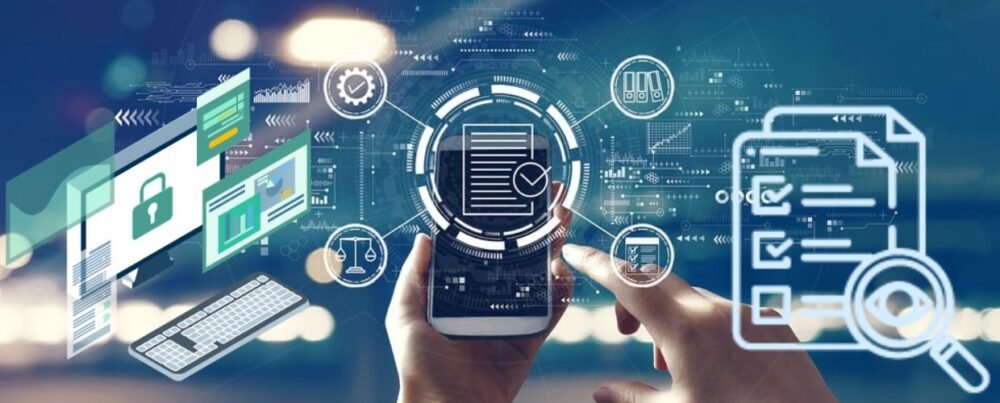The rapid digitalization of business processes has brought about new complexities, making it essential for organizations to integrate effective governance, risk management, and compliance (GRC) practices with robust business continuity planning. This article explores the intersection of online GRC and business continuity planning, highlighting the importance of this convergence in strengthening resilience and ensuring the long-term success of organizations in the digital era.
The Significance of Online GRC
In today’s fast-paced and interconnected world, businesses face numerous challenges when managing risks and ensuring uninterrupted operations. The significance of online GRC cannot be overstated in today’s digital landscape. As organizations increasingly rely on technology and online platforms, they face many risks related to data security, privacy, regulatory compliance, and ethical considerations. It encompasses a set of practices, strategies, and tools that enable businesses to effectively manage governance, mitigate risks, and ensure compliance in the digital realm.
Comprehensive Framework for Risk Identification
One key aspect of online GRC is its ability to provide a comprehensive framework for identifying and assessing potential risks. By leveraging risk assessment methodologies and compliance standards, organizations can proactively identify vulnerabilities and anticipate threats in the digital space. This enables them to develop strategies and implement controls to mitigate risks before they materialize into significant issues.
Protecting Digital Assets
Online GRC practices help organizations protect their digital assets. Data breaches, cyber-attacks, and system failures can devastate businesses. Its initiatives emphasize the importance of data security, privacy, and the protection of critical digital infrastructure. By implementing robust controls and security measures, organizations can safeguard their digital assets, maintain customer trust, and comply with relevant regulations.
Ensuring Regulatory Compliance
Online GRC is vital in maintaining compliance with regulatory requirements. With the ever-increasing regulations and legal frameworks governing digital operations, organizations must stay abreast of the latest developments and ensure compliance. Its practices provide organizations with the tools and frameworks to monitor and manage compliance, reducing the risk of legal and financial repercussions.
The Essence of Business Continuity Planning
Business continuity planning (BCP) refers to the proactive measures organizations take to ensure operational resilience in unexpected disruptions or disasters. It involves identifying critical business functions, assessing potential risks, and developing strategies to mitigate and recover from adverse events.
BCP aims to minimize the impact of disruptions, maintain essential services, and enable a swift return to normal operations. In today’s digital landscape, where organizations heavily rely on technology, BCP becomes even more critical to mitigating cyber threats, data breaches, and system failures.
The Convergence: Online GRC and Business Continuity Planning
The convergence of online GRC and business continuity planning creates a synergistic approach that strengthens organizational resilience in the digital era. By integrating these two domains, organizations can effectively anticipate, prevent, and respond to risks while ensuring the continuity of their operations.
Risk Identification and Assessment
Online GRC practices provide a comprehensive framework for identifying and assessing potential risks in the digital landscape. Organizations can identify vulnerabilities, anticipate threats, and develop proactive mitigation strategies by leveraging risk assessment methodologies and compliance standards. This information feeds into business continuity planning, enabling organizations to prioritize critical functions and allocate resources accordingly.
Continuity Strategies for Digital Assets
Online GRC initiatives emphasize the protection of digital assets, including data, systems, and infrastructure. When coupled with business continuity planning, organizations can develop specific strategies to ensure the resilience of these digital assets. It may include implementing redundant systems, backup and recovery mechanisms, and secure data storage practices to minimize downtime and maintain business operations during disruptions.
Crisis Response and Communication
The convergence of online GRC and business continuity planning enables organizations to establish robust crisis response and communication protocols. Its practices provide the foundation for effective incident management, while business continuity planning ensures that communication channels and response mechanisms are in place to address disruptions promptly. By integrating these aspects, organizations can minimize the impact of crises, maintain customer trust, and protect their reputation.
Conclusion
In the digital era, where businesses face ever-evolving risks and challenges, the intersection of online GRC and business continuity planning is crucial. By integrating these two domains, organizations can achieve a holistic and proactive approach to risk management and operational resilience. The convergence enables businesses to identify and address potential risks, protect their digital assets, and establish robust strategies to ensure uninterrupted operations. Embracing this synergy empowers organizations to navigate the complexities of the digital landscape and secure long-term success in an increasingly interconnected world.









